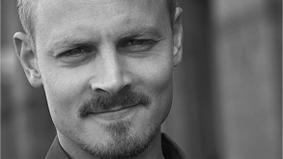‘One of my all-time favorite quotes is from Albert Einstein: “There are only two ways to live your life. One is as though nothing is a miracle. The other is as though everything is a miracle.” I like to lean toward the latter, and I’m definitely drawn to other people who do the same.’ Jeff Weiner, LinkedIn
Noah linked to a great NY Times interview with Jeff Weiner, CEO of LinkedIn, the context being an excellent point Jeff makes about the challenge of dealing with the email torrent that we all suffer from. He says that (like any other tool) it’s what you make it – so if you want to receive less email, then send less. Which is a great piece of advice.
When I read the full interview, there were lots of other valuable thoughts I took from it, including one about the difference between leading and managing. Managers, says Jeff, will tell people what to do whereas leaders will inspire them to do it. And this starts with a compelling vision.
That reminded me of how Ed Catmull, President of Pixar, has described the way in which his company works. Their creative process (the output of which has resulted in a product successs rate that is second to none in the film industry) involves a large number of people, often from different disciplines, working effectively together as a team to solve a great many problems, but marshalled around a singular vision:
“We say we are director led, which implies they make all the final decisions, [but] what it means to us is the director has to lead.. and the way we can tell when they are not leading is if people say ‘we are not following’.”
Jeff goes on to talk about the challenge of prioritisation, which in my experience is something that is very real in many organisations, particularly given the rate of change and increasing compexity in which we all find ourselves. There are so many potential areas of focus, so many things competing for attention and resource, that making the right prioritisation choices will define not only a CEOs tenure and success, but the survival of the company they are leading. True prioritisation, he says, starts with answering the (difiicult but critical) question: If you could only do one thing, what would it be?
Serendipitously, I’d just been reading Eric Barker’s post on ‘Commander’s Intent‘. As described in Made To Stick, Commander’s Intent (CI) is a military concept designed to ensure success on the battlefield, and described as “a crisp, plain-talk statement that appears at the top of every order, specifying the plan’s goal, the desired end-state of an operation”. The point being that as situations in the field change so rapidly and it being so difficult to predict factors which might impact the course of the battle (“no plan survives contact with the enemy”), CI is a way of crystalising an objective whilst allowing for the flexibility necessary for troops on-the-ground. The CI might be relatively abstract at very senior levels, more precise at lower levels but aligns the behaviour of soldiers at all levels. The planning process might be useful in forcing people to think through the correct issues, but a plan can quickly become obsolete in the face of unpredictable events, so a CI never specifies as much detail. In the words of Colonel Tom Kolditz (Head of the Behavioral Sciences Division at West Point): “You can lose the ability to execute the original plan, but you never lose the responsibility of executing the intent.”
My hunch is that in some organisations, not only is management mistaken for leadership, but a plan often becomes a substitute for a lack of vision. It was interesting that Jeff Weiner talked about how he never really aspired to be a CEO. It makes me wonder if some of the best leaders of companies are not those that set out to become that, but rather those that simply set out to pursue a vision.




